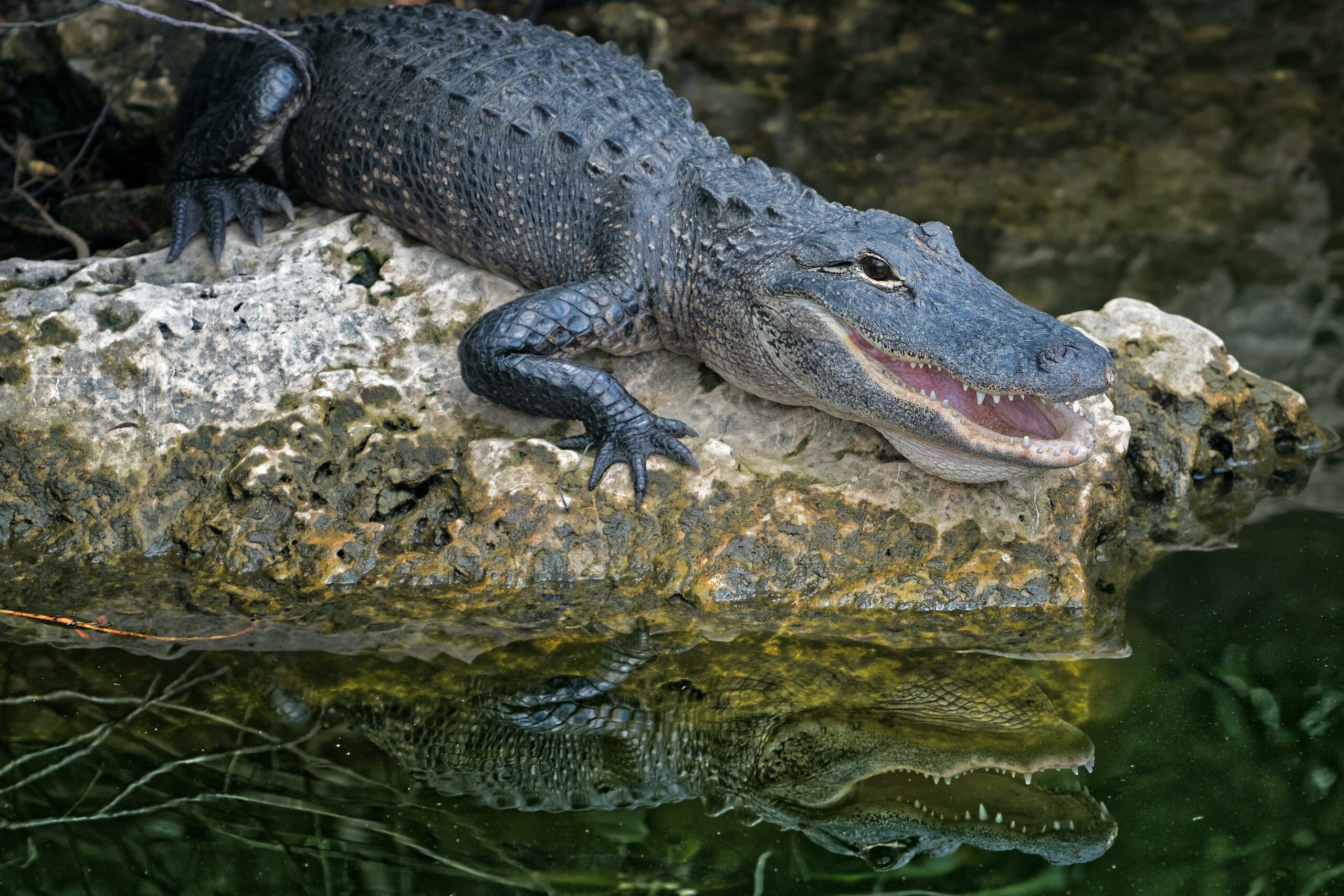Alligators diet: When we think about alligators, we often picture them as strong predators hiding in swamps. Floridian alligators are famous reptiles known for their strength and ability to sneak up on prey. Many wonder, “What do alligators eat?” ,” What is an alligator’s diet?”. Here, we’ll explore the exciting eating habits of these top predators and look at their varied diets.
Exploring the Diet of Baby Alligators
Baby alligators, known as hatchlings, have specific preferences regarding their diet. Despite lacking the size and strength to tackle larger prey, they are strategic in their feeding habits. Their primary diet comprises small, easily catchable creatures such as insects, tadpoles, and crustaceans. This early diet is crucial as it provides essential nutrients for their growth during their formative years. By consuming this mix of aquatic creatures, baby alligators lay the foundation for their future prowess as skilled hunters. This diet not only sustains their growth but also helps develop their hunting instincts, setting them on the path to becoming formidable predators in the future.
What Adolescent Alligators Eat
Alligators undergo significant development in their hunting abilities during adolescence, expanding their palate to encompass a wider variety of prey. As they transition into subadults, their teeth grow, allowing them to tackle larger fish, amphibians, and crustaceans. Moreover, their enhanced hunting prowess enables them to capture birds and small mammals frequenting the water’s edge successfully. From primarily consuming insects and small prey, they gradually incorporate a broader array of water and land creatures into their diets, establishing themselves as apex predators within their ecosystems. This life cycle stage is crucial for honing their predatory skills and adapting to their evolving environment.
What do Adult Alligators Eat
Adult alligators grow about two to 12 inches yearly, depending on their habitat. Male alligators tend to grow faster and more extensively compared to females. When fully grown, they boast over 75 teeth and can weigh up to 1,000 pounds. These apex predators have a vast appetite, devouring a variety of prey. Their diet primarily consists of large fish and birds, but they are also known to prey on small mammals such as raccoons, deer, and even smaller alligators. Their remarkable hunting skills and powerful jaws make them essential for maintaining biodiversity in wetlands across the United States.
Discover How Alligators Help Florida’s Wilderness
Alligators are essential for Florida’s wilderness. They help keep things balanced and healthy in their homes. These giant reptiles are like the bosses of the ecosystem. They ensure only a few fish and turtles are running around by eating some of them. Also, when alligators build their nests, they create little homes for other animals during floods or dry spells. They also dig around, which helps keep the land in good shape for other creatures.
Alligators are plentiful at recycling, too! They eat dead animals and then put the nutrients back into the ground through their poop. It makes the soil richer and helps plants grow. Alligators also bring in tourists who want to see them in the wild, which allows the local economy.
So, alligators are not just cool to look at; they’re also essential for keeping Florida’s wilderness healthy and happy.
An airboat ride offers an exciting opportunity if you’re eager to witness alligators in their natural habitat. Experience the thrill of spotting these modern-day dinosaurs in action. After your airboat tour, head to Grape Hammock for even more gator viewing and interactive experiences suitable for the whole family. For an added adventure, take a scenic drive to Lake Kissimmee, where you can encounter over 50 alligators, crocodiles, and caimans in their natural surroundings. Join us for an unforgettable journey into the heart of Florida’s wilderness, and book your adventure now!
Our Service Area: Lake Wales, Serbing, Frostproof, Dundee, Bartow, Babson Park, Haines City, Cypress Gardens, Lake Kissimmee, Avon Park, Highland Park, Davenport


